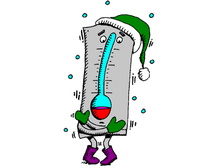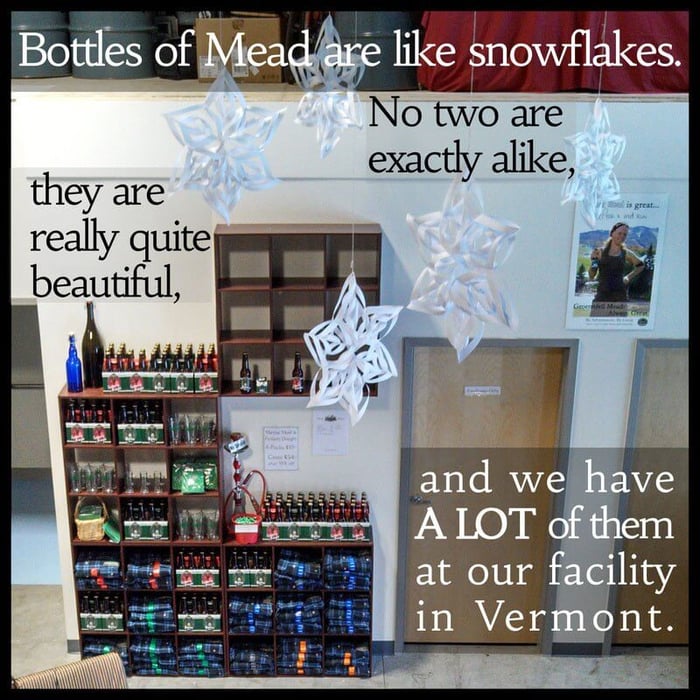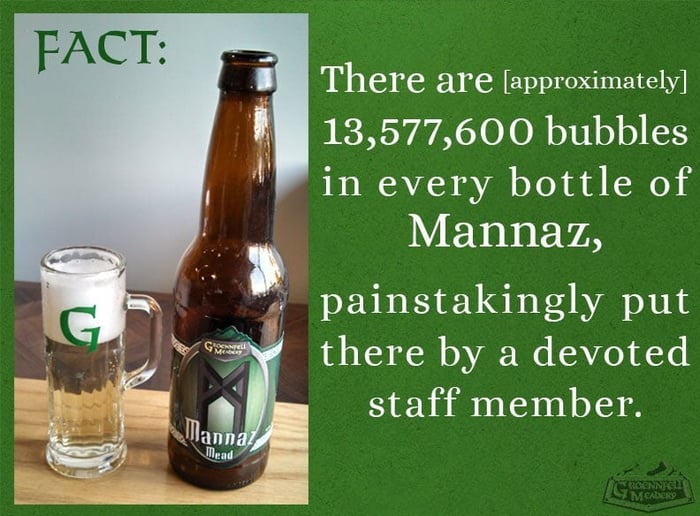For those of you who are from warmer climes, here’s a quick explanation: If your car starts with just a little bit of complaining, it’s probably just cold out. If you can’t wear jeans anymore because the denim will freeze and crack, then it’s most likely very, very cold. Vermont children start complaining somewhere between the two.
Now, why does this matter to you as a meadmaker? Well, it doesn’t unless you happen to be like our meadmaker: Stingy.
Our meadmaker abides by the belief that paying to heat his apartment is a sign of weakness. This is no joke, Ricky attempts to keep his home warm through the winter exclusively by making soup three times a week on his stove and the metabolic warmth he generates from being alive. When asked whether he’s ever suffered from hypothermia, he tends to respond, “Suffered from? No. I’ve participated in hypothermia on numerous occasions, however.”
This might be possible for Ricky and his perhaps overly-understanding spouse, but cold temperatures are a no-go for yeast. At lower temperatures, mead fermentation becomes sluggish, sometimes even inefficient to a point where it begins producing off flavors.
Over the years, however, Ricky has come up with numerous solutions to his frigid fermentation conundrum. We present, in no particular order:
- Insulate the heck out of your fermenter. If your must (aka honey water solution) goes in at 75F, and you wrap lots of blankets around the fermenter, a combination of metabolic activity and Newton’s Law of Cooling will probably allow for a healthy fermentation without too much trouble.
- Find the warmest part of your house. Just because you can see your breath in the bedroom and it’s hard to apply mascara with all that frost on the bathroom mirror, it doesn’t mean that it isn’t toasty warm next to your old oil burning furnace. See if there’s a temperate spot in your home.
- Warm your fermenter directly. There are many products on the market from heat belts to warming trays for buckets and carboys. Others opt to place their buckets in an unplugged fridge with an incandescent bulb. All of these can be attached to a temperature controller to keep your mead from getting too warm.
- Admit that your mead is more important to you than your family, and only heat the house when you have an active fermentation going. Well, it might not make you popular, but this is certainly not unheard of in the homebrew world.
- Choose a cold tolerant yeast. If you can’t warm the vessel, why not try a lager yeast? They love cold temperatures! Anywhere between 45F and 60F is their jam.
- Don’t worry about it. Slow and sluggish isn’t always a bad thing. After all, honey isn’t all that expensive and what’s more fun than an experimental batch? Pitch that yeast and see what happens.
- Brew at the right time of year. It may sound silly, but back in his homebrew days, Ricky just brewed seasonally: Ales in the spring, Belgians in the summer, ciders and meads in the fall, and lagers in the winter.
- Spend an enormous amount of money on a glycol unit which can heat or cool your jacketed conical fermentation vessel. This is what the pros do. Just thought it should be thrown in for good measure.
Well, we hope that one of these works out for you!
Do you have other ideas? Post them in the comments or on our Facebook page. We’d love to know how you brew in the winter.






